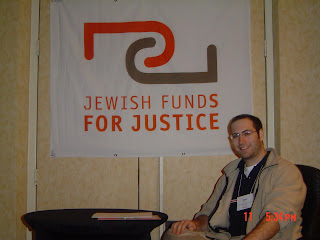Kehillot Kedoshot (Posting #5): Day 3
The second beit midrash session used the story about the members of the Sanhedrin deposing Rabban Gamliel as the Nasi and then eventually reinstating him, but with certain limits (Berakhot 27b-28a / ברכות כז:-כח.) as a jump-off for discussion about leadership models and social organizing. It was interesting, especially since I have read this story before, but now doing so in a new light.
Anyways, the conference came to an end shortly after that session.
I came away from the conference with finally getting a much better and more complete picture (albeit not as full as possible - but full enough) of social organizing and social justice work through faith-based organizing. I was glad I did so as I now know that I do not have such an affinity for trying to incorporate this work into my future rabbinate. However, there are tools that are aspects of this work that I do hope to utilize - most significantly, one-to-ones, as well as developing relational relationships and the importance of [developing] public relationships.
Labels: conference, JFJ_K_K












